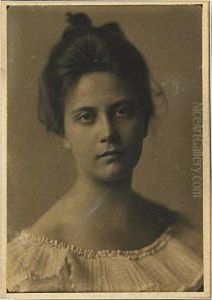Mathilde Weil Paintings
Mathilde Weil was a pioneering American photographer, born in 1872 in Philadelphia, Pennsylvania. Her contributions to early 20th-century photography, particularly in the realm of portraiture, have been acknowledged for their artistic and innovative approach. Although not as widely recognized as some of her contemporaries, Weil's work played a significant role in the evolution of photographic art in the United States, particularly within the context of the pictorialist movement.
Weil's career began in the late 1890s, a time when photography was beginning to be appreciated as an art form. She was known for her ability to blend traditional portrait techniques with the emerging styles of pictorialism, an approach that emphasized beauty, tonality, and composition akin to the qualities found in paintings. This was a departure from the more straightforward, documentary style of photography that had been prevalent. Weil's studio in Philadelphia quickly became a hub for artistic creativity, attracting a diverse clientele that included prominent figures of the time.
Throughout her career, Mathilde Weil was deeply involved in the burgeoning art photography movements of the early 20th century. She was a member of various photography clubs and societies, where she exhibited her work alongside that of other pioneering photographers. Her photographs were featured in several major exhibitions, including those organized by the Pennsylvania Academy of the Fine Arts and the Photographic Society of Philadelphia, helping to solidify her reputation as a leading figure in American art photography.
Despite the acclaim she received during her lifetime, Mathilde Weil's contributions have not been as prominently preserved or celebrated in the annals of photography history as those of some of her peers. Her death in 1942 marked the end of a career that had spanned over four decades, during which she had navigated the transition of photography from a purely technical craft to an acknowledged art form. Today, efforts by art historians and curators are gradually bringing more attention to Weil's work, recognizing her role in shaping the visual culture of her time and contributing to the broader narrative of American art history.
